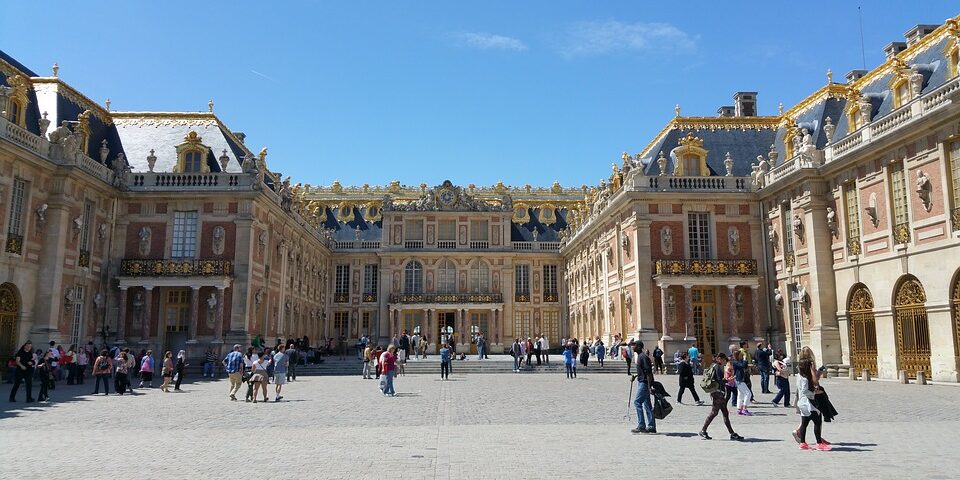The Palace of Mirrors, or the Hall of Mirrors in the Palace of Versailles, is one of the most renowned and breathtaking rooms in the world. Spanning over 70 meters in length, this opulent hall is adorned with 357 mirrors that reflect the light from the grand windows overlooking the gardens. The hall was designed by architect Jules Hardouin-Mansart and decorated by painter Charles Le Brun, epitomizing the height of French Baroque art and architecture. It served as a grand space for courtly functions, including royal ceremonies, and remains a stunning example of Louis XIV’s pursuit of magnificence and theatricality.
The gardens of Versailles, extending over 800 hectares, are an equally magnificent feat of landscape design. Created by André Le Nôtre, the gardens are a meticulously planned ensemble of geometric paths, sculpted hedges, and elaborate fountains. The grand axis, with its series of cascades and water features, stretches out from the palace, showcasing a harmonious blend of art and nature. The gardens include notable features such as the Grand Canal, where boating was a popular pastime for the royal court, and the intricate Fountain of Apollo, which celebrates the Sun King’s divine right to rule. Together, the Hall of Mirrors and the gardens exemplify the grandeur of Louis XIV’s reign and his vision of Versailles as a symbol of absolute monarchy and artistic triumph.

